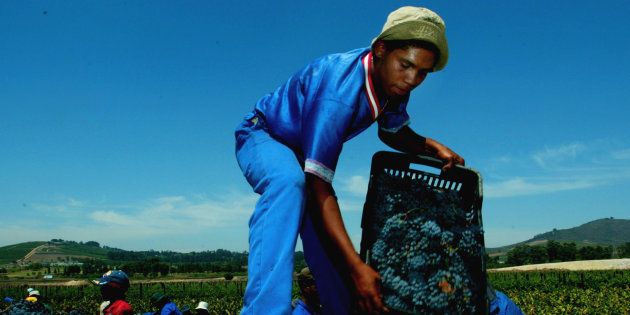
"Our country requires an economy that can meet the needs of all our economic citizens -- our people and their enterprises -- in a sustainable manner. This will only be possible if our economy builds on the full potential of all persons and communities across the length and breadth of this country," according to the department of trade and industry.
In 2010, amendments to the Employment Equity Act proposed the introduction of national demographics to impose setting racial targets. Addressing the concerns of what this meant for minorities that were regionally concentrated, then director general of labour Jimmy Manyi said coloureds were "over-concentrated" in the Western Cape and should move elsewhere if they wanted work.
His chauvinist proposal of an apartheid-style migrant labour system, where lazy governance trumped the constitutional rights of South African citizens, was met with fierce criticism. Former finance minister Trevor Manuel accused him of "worst order" racism, akin to that of apartheid's key architect, Hendrik Verwoerd.
Notwithstanding the backlash, the government proceeded with their plan through revised black economic empowerment (BEE) codes of good practice that took effect on May 1 2015. Amendments to the BEE codes required Economically Active Population (EAP) statistics to be reported under race groups that distinguish between Africans, coloureds and Indians, and placed a cap on the number of BEE points attainable for senior, middle and junior management based on these race groupings.
"This matters because so-called 'coloured' people make up 52 percent of the EAP in the Western Cape, but only 11 percent of the national EAP. Similarly, Indians make up 11 percent of the EAP in KwaZulu-Natal, but only 3 percent of the national one," stated the South African Institute of Race Relations in response to the amendments.
Employment statistics for the Western Cape, at the time, already demonstrated that coloureds were under-represented in the workforce based on regional data, accounting for a mere 36.6 percent of those employed in both permanent and temporary jobs. They also demonstrated a gross under-representation in management roles at all levels based on regional and national EAP figures.
Youth unemployment was strongly linked to those who had not completed matric, with 57 percent without a job.
The absence of prescribed regional EAP consideration in government's current methodology means that coloureds in the Western Cape would have a harder time acquiring management positions, and an even harder time ending poverty experienced by coloured people.
Early last year, Statistician-General Pali Lehohla warned that South Africa faced a "cocktail of disasters" as a disproportionate number of black and coloured youth remained unemployed, correlating with figures demonstrating that the two population groups had the worst higher education attainment.
The report, which assessed the vulnerability of South African youth, found that youth unemployment was strongly linked to those who had not completed matric, with 57 percent without a job, compared to an unemployment rate of 38 percent among those who had completed matric. It assessed the lack of textbooks, being a contributing factor to poor matriculation rates, and found the Western Cape fairing the worst (3 percent) in terms of the number of pupils who did not receive textbooks at all.
Schools systematically underfunded during apartheid remain well below standard. Coupled with a host of other structural barriers -- such as the fact that in poor households income earners are financially responsible for at least 2.65 other people compared with wealthy households, where the ratio is one to one -- the increasing social divide remains eminent.
Recent findings by the Studies in Poverty and Inequality Institute on the right to work in South Africa suggest that while unemployment rates grew across all race groups over the past year, the most significant increase in unemployment rates was among coloureds, at 1.5 percent. Coloureds also experienced the highest increase in unemployment rates over the past decade.
The latest Stats SA poverty trend analysis demonstrated an increase in people living below the upper-bound poverty line for only coloured and black South Africans between 2011 and 2015. The Poverty Trends in South Africa report highlighted an increase of 4.2 and 1.8 percentage points, respectively, noting an accelerated rate of poverty among coloureds.
Limiting access to management job opportunities in the Western Cape based on national EPA benchmarks will have a devastating effect on its coloured majority.
The same report showed a substantial decrease in poverty rates among Indian South Africans, with poverty among white people remaining below 1 percent during that period. This comes as no surprise considering the overrepresentation of both population groups in top management positions, as well as higher rates of educational attainment.
Limiting access to management job opportunities in the Western Cape based on national EPA benchmarks will have a devastating effect on its coloured majority. As demonstrated, access to better employment opportunities is crucial if we are to tackle existing poverty cycles.
The intricacies of social disparities in South Africa must be considered in policymaking, especially when these policies aim to transform a social system designed to create such divisions. After all, BEE is meant to redress social inequality caused by apartheid, not perpetuate it.
